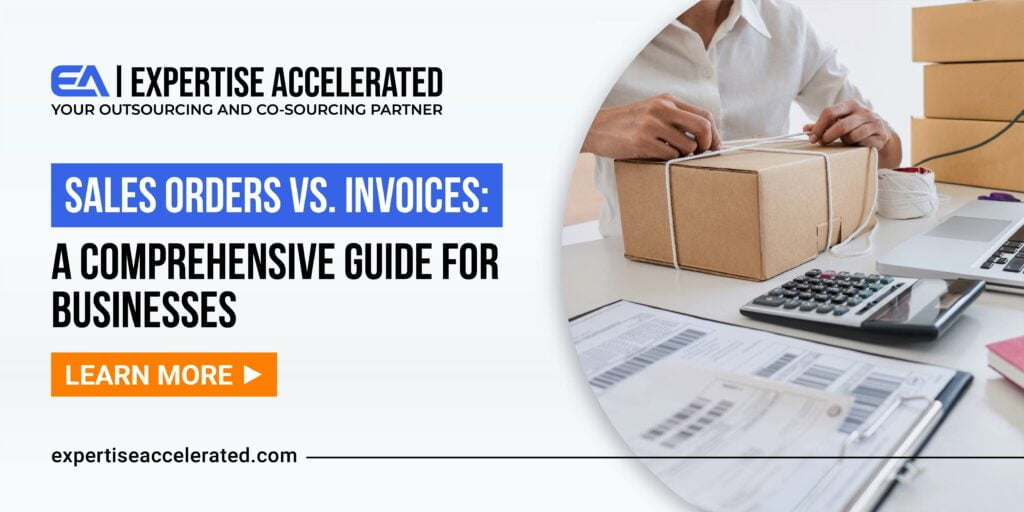You might be wondering “Why can’t suppliers just submit the purchase orders to receive payment?” Since a sales order is an approval of the payment that is supposed to be made for the goods and services, then why do companies take an extra step of sending the invoices. These invoices need to be processed and routed around the organization for approval. This may take extra paper and effort. Why make the purchasing process more complicated? In this blog, we will be answering these concerns along with many others. For example, why invoices are a necessary stepping stone to acquire a product and how they may differ from sales order. Keep on reading to find out more.
Why Are Sales Orders Important?
Sales order refers to the confirmation of a sale that prompts the vendor to start assembling, packaging and preparing the goods and services requested in a purchase order. From the perspective of a vendor, sales orders play a pivotal role in helping you keep real-time track of your inventory: when to restock it and what you already have in stock.
Moreover, when a customer agrees to a sales order, you enter into a legal agreement with them: they will pay you a specific amount of money for the products or services you sell them on the mentioned conditions in the sales order. This can help you get the order secured and avoid unexpected cancellations. Moreover, you can also consult your lawyer to help you explain any complex conditions mentioned in the sales order by the customer. This ensures that you will deliver the order on time for a timely payment for your services or products by the customer.
Further, sales orders also help you avoid material misstatement in your company’s financial reporting. It is a kind of an inaccuracy that can lead to errors in financial statements, ultimately impacting the financial decisions and predictions you make for your company. This can really halt your business growth and cause serious financial drawbacks.
Keeping a track of sales orders can also help your firm stay transparent in case of an audit. This ensures that you are not stating your company’s profits or losses incorrectly.
HubSpot in their blog titled, “Sales Orders: What They Are Compared to POs & Invoices” write that, “A sales order is a commercial document — prepared by a seller and issued to a customer — confirming the sale of goods or services involved in a given transaction.”

Sales Order Format
A sales order usually contains the following details:
- Company name and contact information
- Customer name and contact information
- Customer billing information
- Customer shipping information
- Product or service information
- Price before taxes
- Tax, delivery, and shipping charges
- Total price after taxes
- Any previous deposit
- Current balance
- Terms and conditions as defined by your company
- Signatures
Sales Order Process
A sales order process is as follows:
- A customer requests a quote for a product or service from a seller.
- Once the vendor receives this request, they send the customer a quote for the requested product or services.
- If the customer finds the quote reasonable, they send a purchase order.
- Upon receiving the purchase order, the vendor uses its details to generate a sales order.
- The vendor then sends the sales order to the customer to confirm the terms and quote of the sale.
- Upon confirmation, the vendor starts assembling, packaging and preparing the goods and services mentioned in the sales order.
- After this, the vendor generates an invoice using the details mentioned in the sales order and sends it to the customer, after which the customer pays the amount mentioned on the invoice within the specified time frame.
This whole process makes sure that a sale is properly documented and conducted, and that both parties namely the customer and the vendor are on a single page and agree to the terms mentioned in the sales order. Thus, a sales order is essential for ensuring a smooth and efficient order processing from start to finish.
After the confirmation of a sales order, the vendor sends the buyer an invoice which specifies the amount of money a buyer owes a vendor for the services and products requested that were agreed on the specific terms mentioned in the sales order. Both invoice and sales order are vendor-generated. The difference is that invoices are generated once the processes of sales order are completed.
A sales order prompts a vendor to start assembling, packaging and preparing a product or services, the invoice on the other hand informs buyers how, when and how much they are supposed to pay for the purchased products and services.

Invoices
Invoices definitively settle deals for vendors and set official timelines for payment. 30 days is a standard timeframe, but that figure can vary from business to business.
Why Are Invoices Important?
Invoices are highly important documents, they settle deals for vendors, setting official time frames for timely payments. An invoice is the most accurate and concrete evidence that both vendors and buyers have for a purchase order. Keeping track of these can help you stay updated with your spending’s and earnings. This also increases accountability among your employees who may be responsible for any additional purchases or sales. Moreover, it can also help you track any outstanding debt that your business may owe to its investors. Keeping detailed records of invoices can be a critical part of that process.
Moreover, it is a best practice for businesses that they keep a real-time record of all their invoices for tax purposes. The IRS suggests that businesses maintain a running summary of all business transactions.
Invoices can also help your business fight legal battles. For example if a customer refuses to pay for your services, you can take them to court, stating that you have an agreed sales order and an invoice as concrete evidence for the purchase order. A signed invoice shows the agreement in place, reducing the risk of any illegal action from you or the customer and over pricing.
The Basics of an Invoice
The basic details on an invoice include, face of the bill, unique identifier number aka the invoice number, which is useful for internal and external reference. It also contains the contact information of the vendor in case there is an error in the invoice.
Terms
Payment terms such as when the customer should pay the bill may be outlined on the invoice. It can also contain discounts that you may be offering to your customers, early payment details and/or any additional charges that may apply on late payments. An invoice also contains the unit cost of an item, total products purchased, freight, handling, shipping and tax charges, outlining the total amount that the customer owes the vendor.
Timing and Printing
Some companies prefer to send a month-end statement as the invoice for all the outstanding transactions. In this case, the statement should mention that no following invoices would be sent. Back then invoices were recorded on paper, which could lead to errors and duplicate entries. With the advent of accounting technology, however, businesses are hastily adapting to automation and outsourcing. Doing this, they can free up their existing resources and reinvest them in core areas to accelerate business growth. This is also something we do at Expertise Accelerated, where cost-effective accounting solutions serve as a gateway for your success venture.


